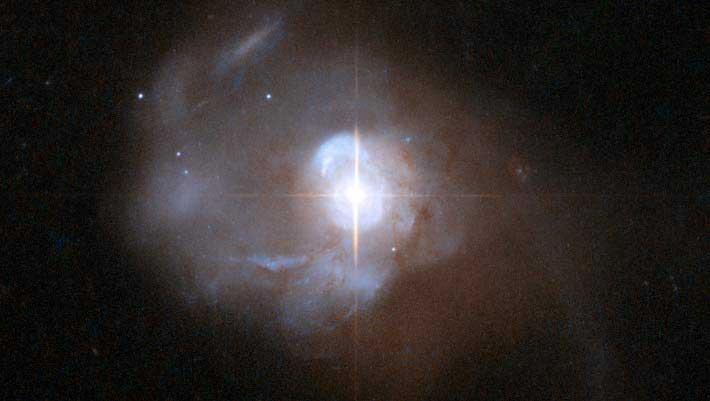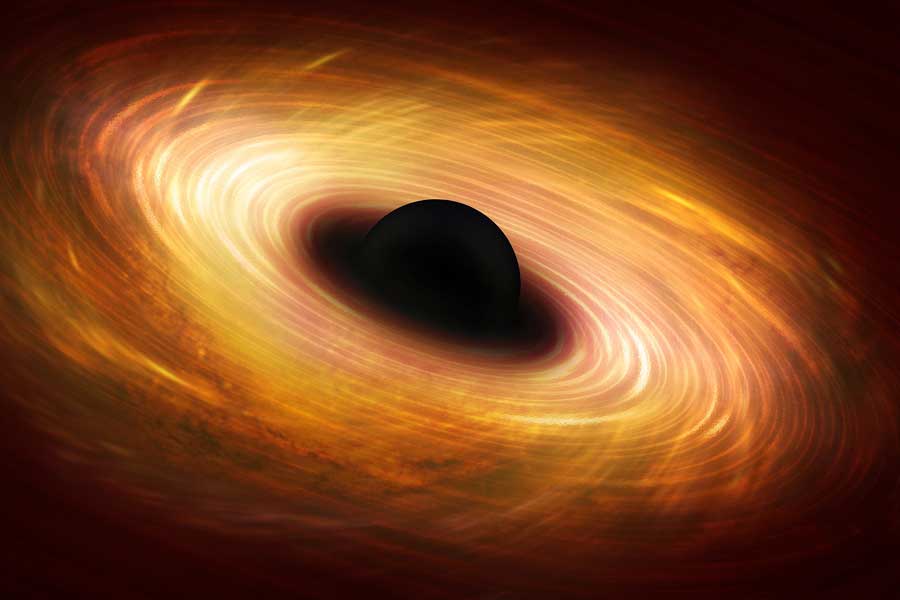An astrophysicist from the University of Oklahoma and his Chinese colleague discovered two massive black holes in the core of the closest quasar to the Earth, Markarian 231 (Mrk 231). The scientists used NASA’s Hubble Space Telescope for the finding.
The discovery suggests that the intense cores of active galaxies or quasars, may commonly host two central supermassive black holes that fall into orbit as a result of the fusion between two galaxies. The pair of black holes generate massive amounts of energy that makes the core of the galaxy host to outshine the glow of its population of billions of stars. This is what scientists identify as quasars.
The team looked at Hubble archival observations of ultraviolet radiation discharge from the core of Mrk 231 and claim they found “extreme and surprising properties.”
How does a quasar work?
If there was only one black hole in the center of the quasar, the entire growing disk made of surrounding hot gas would glow in ultraviolet rays. Instead, as there are two black holes the ultraviolet glow of the dusty disk drops off toward the center.
By observational evidence, the disk shows a big hole encircling the central black hole. The explanation for this, based on dynamical models, is that the center of the disk is carved by the action of two black holes orbiting each other.
Youjun Lu of the National Astronomical Observatories of China, Chinese Academy of Sciences, said, “We are extremely excited about this finding because it not only shows the existence of a close binary black hole in Mrk 231, but also paves a new way to systematically search binary black holes via the nature of their ultraviolet light emission.”

“The structure of our universe, such as those giant galaxies and clusters of galaxies, grows by merging smaller systems into larger ones, and binary black holes are natural consequences of these mergers of galaxies.”, co-author Xinyu Dai of the University of Oklahoma, explained.
A Galactic Merge
The study also determined that one black hole is bigger than the other. The central black hole is estimated to be 150 million times the mass of our Sun. The black hole with lower mass is the leftover of a smaller galaxy that previously merged with Mrk 231. The dynamic duo completes an orbit around each other every 1.2 years.
The merger resulted in making Mrk 231 an energetic starburst galaxy with a star-formation rate 100 times greater than the one of our Milky Way galaxy. Experts predict that the black holes will collide in a few thousand of years. Mrk 231 is located 600 million light-years away from our planet.
Source: The Astrophysical Journal

